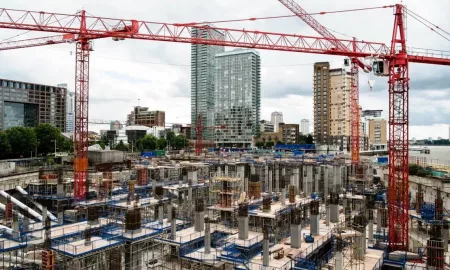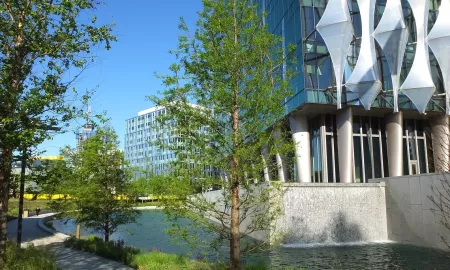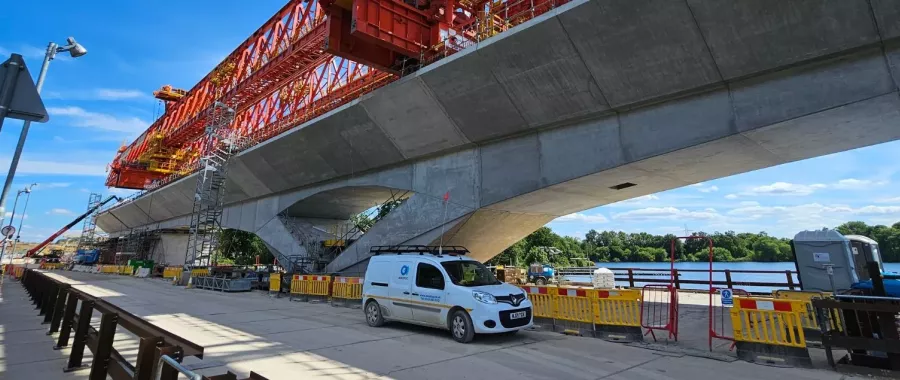Over the past year, SOCOTEC Monitoring has undertaken over 100 hours of rope access work and this is expected to be an area of continued growth due to the benefits it brings clients in budget efficiencies, time saved and quality control over instrumentation installation.

Last year, SOCOTEC Monitoring - formerly ITM Monitoring - expanded its own in-house capabilities, and thus extended its areas of overall control over monitoring instrumentation installation, by investing in rope access training for its employees.
Rory Millin, operations manager at SOCOTEC Monitoring, achieved an IRATA level 1 qualification and puts this skill into action on projects where SOCOTEC Monitoring is providing manual or automated geotechnical and structural monitoring services, including Pen Y Clip tunnels, Port of Dover, Edinburgh’s Forth Road Bridge.
Here, Rory discusses the many benefits of installing monitoring systems via rope access.
What is Rope Access and how is it Used?
IRATA, the International Rope Access Trade Association, defines rope access as a safe method of working at height where ropes and associated equipment are used to gain access to and from the work position, and to be supported there.
When installing monitoring instrumentation, SOCOTEC Monitoring makes use of three types of access systems – rope, MEWPs (Mobile Elevating Work Platforms) or scaffold. SOCOTEC Monitoring selects the best option depending on the needs of the client and the scenario of the specific job, but it generally comes down to accessibility, safety and cost.
Rope access allows SOCOTEC Monitoring to quickly and safely access areas of sites that have previously been problematic due to reasons such as accessibility, weight limits, time restraints and safety, which may not be reached using either of the other two more conventional access systems.
It is quite unusual for a monitoring company to have staff with IRATA qualifications, as most other monitoring contractors employ subcontractors to carry out this work. SOCOTEC Monitoring felt that it was worth investing in this training as it allows greater control over what happens on site with regards to placement and installation of instrumentation, which ensures SOCOTEC Monitoring delivers the quality of work which customers have come to expect.
When setting up rope access on site, the SOCOTEC Monitoring team works with a rope access operative partner who has a level 3 IRATA qualification to establish a safe system of work. Once a safe system of work has been setup, SOCOTEC Monitoring carries out the required site assessments and instrumentation installations. This eradicates any concerns SOCOTEC Monitoring or clients may have about equipment being installed correctly.
Advantages of Rope Access
There are many advantages of using rope access in geotechnical and structural monitoring projects, these include:
Safety
Trained in the use of specialised ropes and implementation of a two-rope system, working as part of an experienced team and the fact that all tools are attached to the rope operatives, rope access is one of the safest ways to work at height and reach otherwise tricky to access sites.
Rapid Deployment and Dismantle
Rope access is quick to set up and equally fast to dismantle, and usually requires fewer personnel than other more conventional access systems.
Minimal Disruption
The ability to deploy and dismantle rope access systems quickly minimises any potential downtime required on site, which means reduced impact on operations. Rope systems also have minimal environmental impact, which is particularly beneficial if works are required in sensitive areas.
Equipment Removed from Site Daily
Unlike scaffolding, ropes can be removed from a site at the end of each shift, reducing any impact on the public and the security risk associated with leaving access routes unguarded. For example, SOCOTEC Monitoring quoted for works in an operational shopping centre, where installation is required to take place over night, with equipment being removed quickly at the end of each shift.
Cost Effective
Requiring fewer personnel to set up, having quicker deployment and dismantle times, with less equipment and reduced downtime and disruption results in lower costs for the client.
Flexible
The type of projects where rope access can be utilised are endless, ranging from railway embankments and cuttings, to internal/external structures. Unlike the more conventional access systems, bespoke rope access systems can be designed for different site scenarios quickly and cost effectively, allowing unlimited access to the point of interest.
If you have a geotechnical or structural monitoring requirement to discuss, please get in touch.
Want to find out more about SOCOTEC Monitoring's services?

You might also like






Add new comment